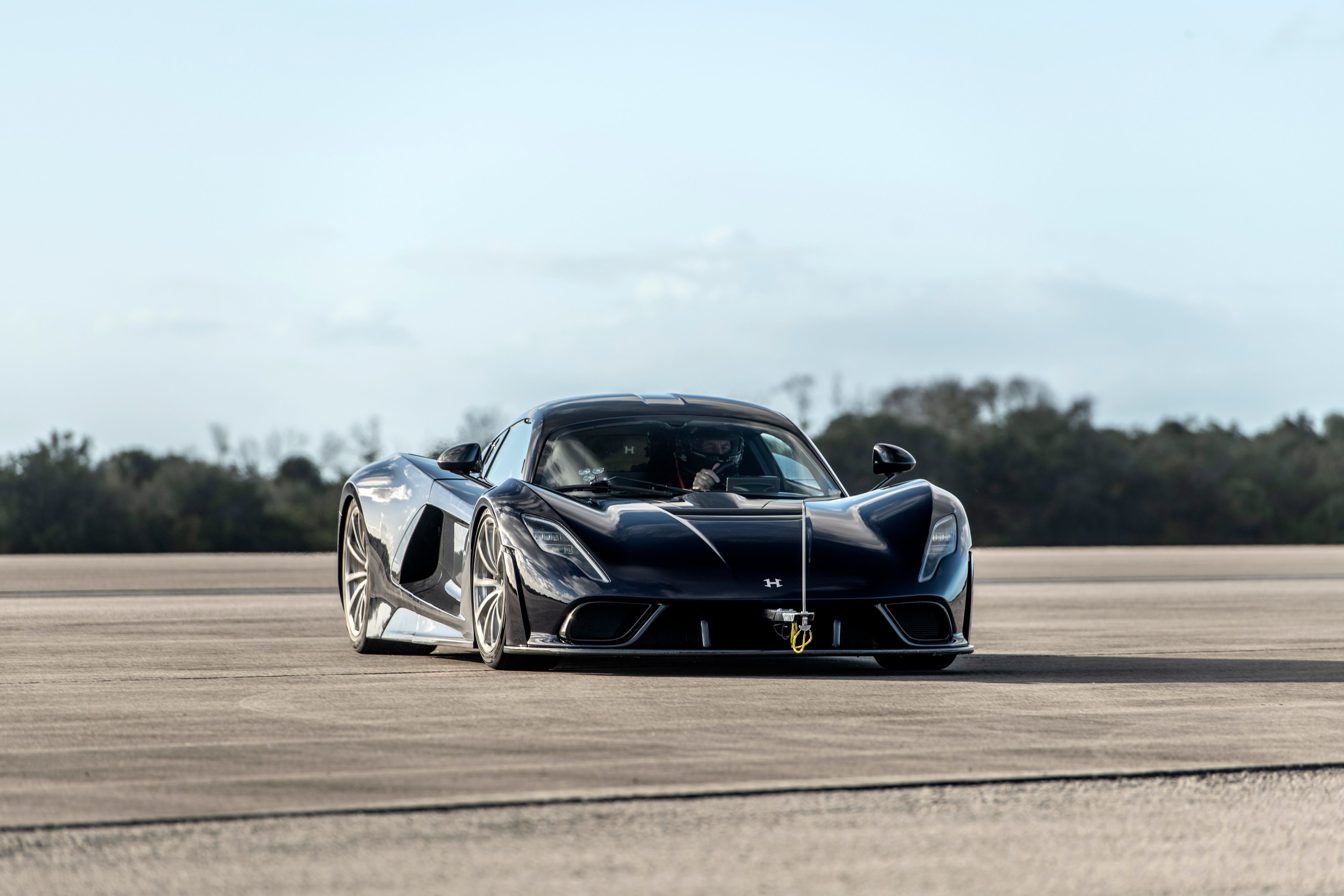
A Hennessey Venom F5 may blast through the 300 mph barrier and take the title of world’s fastest production car a decade after its predecessor, the Venom GT, snatched the crown from Bugatti. The Texas-based hypercar manufacturer will once again have to dethrone a Bugatti, as the current record of 304 mph was set by a Bugatti Chiron Super Sport 300+.
The Venom F5 is a “bespoke” carbon fiber chassised masterpiece with a hefty 1,187bhp twin-turbocharged V8 ‘Fury’ engine propelling that lightweight frame along. If simulations are correct, it should be able to break the record and then some. But you don’t set records virtually; it’s all about what happens on the track.
John Hennessey, who founded the Texas-based company, is both confident his vehicle will break the record and welcomes any potential competition.
“I love that Koenigsegg is gearing up for big speed. I hope that Bugatti joins the party too – it’s rivalries like this that fuel our passion and drive us to go faster, innovate more, and push harder! With 22 customer cars delivered and a newly expanded engineering team, we’re well-placed to refocus our attention on enabling the Venom F5 to deliver on its potential,” he said in a statement.
Hennessey goes on to claim that the new Venom F5 “has a simulated theoretical top speed of 328mph,” though that’s not a number his company is hoping to post in the real world. For now, they’re looking at breaking 300 mph in two directions and getting very close to 311 mph one way. In a world swiftly becoming dominated by EVs, the hypercar company founder suggests the achievement “would be the ultimate way of celebrating the internal combustion engine.”

Hennessey has done it before
While producing the fastest car on earth is no easy feat, it’s actually familiar territory for Hennessey. The company took the crown from another Bugatti, the Veyron 16.4 Super Sport, in its Venom GT.
If the Venom F5 lives up to the hype, it will be a significant leap forward when compared to its predecessor. The Venom GT broke the record at just over 270 mph, beating the Bugatti’s top speed of 268.86mph. To take the record in 2024, the Venom F5 will have to add around 35 mph to that total — an increase of around 13% on the Venom GT.
Le Mans winner and Pike’s Peak record setter David Donohue will be in the driver’s seat for the world record attempt. A date has yet to be set for the attempt itself, but Hennessey plans to set the record at some point this year.
Although exceedingly rare, the Venom F5 does count as a production car. There are 24 privately owned examples of the coupe out in the wild, and that’s all Hennessey ever plans on building. However, if you want a Venom F5 of your own and you have the bank balance to secure one, open-top and track-focused variants are still available to order.



